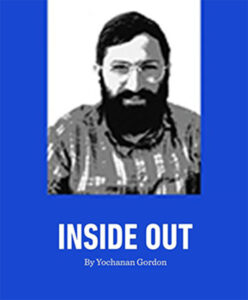A Non-Prophet Entity
When the Shunamite woman (Melachim II, 4:9) encountered the prophet Elisha, she remarked to her husband that she had seen a holy man of G-d. The Talmud (Brachos 10b) queries: How could she tell that Elisha was holy? The Talmud offers some answers to its question. But let’s stop and ponder for a moment. Why is the Talmud even asking the question? Elisha looked like a holy man. He was a prophet. He communed with the Divine. He was the successor to the great prophet Eliyahu. What greater credentials could a human being have? Clearly a person of such sanctified stature would qualify as a holy man of G-d! Nonetheless, the Talmud wants to understand how she knew this, how it was evident to her that he was a holy man of Hashem.
Rav Yisroel Salanter, widely known as a founder of the Mussar Movement, observed that since the Talmud poses the question, it must be that you cannot assume or infer from a person’s appearance whether or not he is actually a holy person. Someone might wear the garb, have the stature or posture, or exhibit the outward mien or look of a holy person, but the bottom line is that the appearance is external; it is not evidence of what goes on inside the person or how aligned they are with HaKadosh Baruch Hu. Hence, the Talmud asks how the Shunamite woman was so confident that Elisha was in fact a holy person. Rav Salanter says that the Talmud’s question “How did she know?” is our sign that a holy exterior should not be confused with holiness.
I listen to our Torah leaders as they speak out regarding the circumstances that beset us these days. I hear words of holiness, urging us to come together, to remain steadfast, and to even be more active in our devotion, to engage in prayer for our people everywhere, and to resolve to be more focused on doing what is right and adhering to mitzvos. These are holy words to channel us into holy behavior. In the Torah (Parashat Kedoshim, in Vayikra 19:2), Rashi and Ramban famously dispute whether being holy is a matter of behavior or a matter of attitude. Clearly, our holy ones, our Torah Sages, are urging us to cultivate kedusha (sanctity) into our lives and our world, in our behavior and how we perceive reality.
I notice the contrast too. I have watched the images and heard the rallying cry of the putative “holy man” who leads the regime that was known in Tanach as Malchus Paras back in the days of Megillat Esther. This supposed “holy man” does not call for his people to become more devout. He does not plea for them to pray. Certainly, he is not urging them to pray for peace. Instead, I hear a rallying cry for bloodshed, for threats of brutal attacks, revenge, and slaughter. His words are those of hatred and destruction, just like the Persian leaders back in the days of Megillat Esther.
All the trappings of external holiness are there: the attire, the garb, the flowing beard, the studious bespectacled face, the intense eyes and confident speech. In fact, with some minor alterations, one might mistake this man for a Sephardic chacham. But there is no holiness in calls for genocide and bloodshed. There is no holiness in calls for revenge. There is no holiness in prompting his followers to seek “martyrdom” by bringing down “infidels.” There is no sanctity in referring to “non-believers” as animals or Satanic entities. No, it is clear that holiness has very little to do with one’s external appearance. One thing I’ve learned from following the news is that the leaders who call for death and destruction are not holy people. They are not on the side of the Holy One. I have also learned that our own people need to be clear that we aim to be holy people, and to refine our behavior towards that end and improve our virtues and values so that we are firmly on the side of the Holy One, Who is always right there by our side. n
Rabbi Dr. Dovid Fox is a forensic and clinical psychologist, and director of Chai Lifeline Crisis Services. To contact Chai Lifeline’s 24-hour crisis helpline, call 855-3-CRISIS or email [email protected]. Learn more at www.chailifeline.org/crisis.














